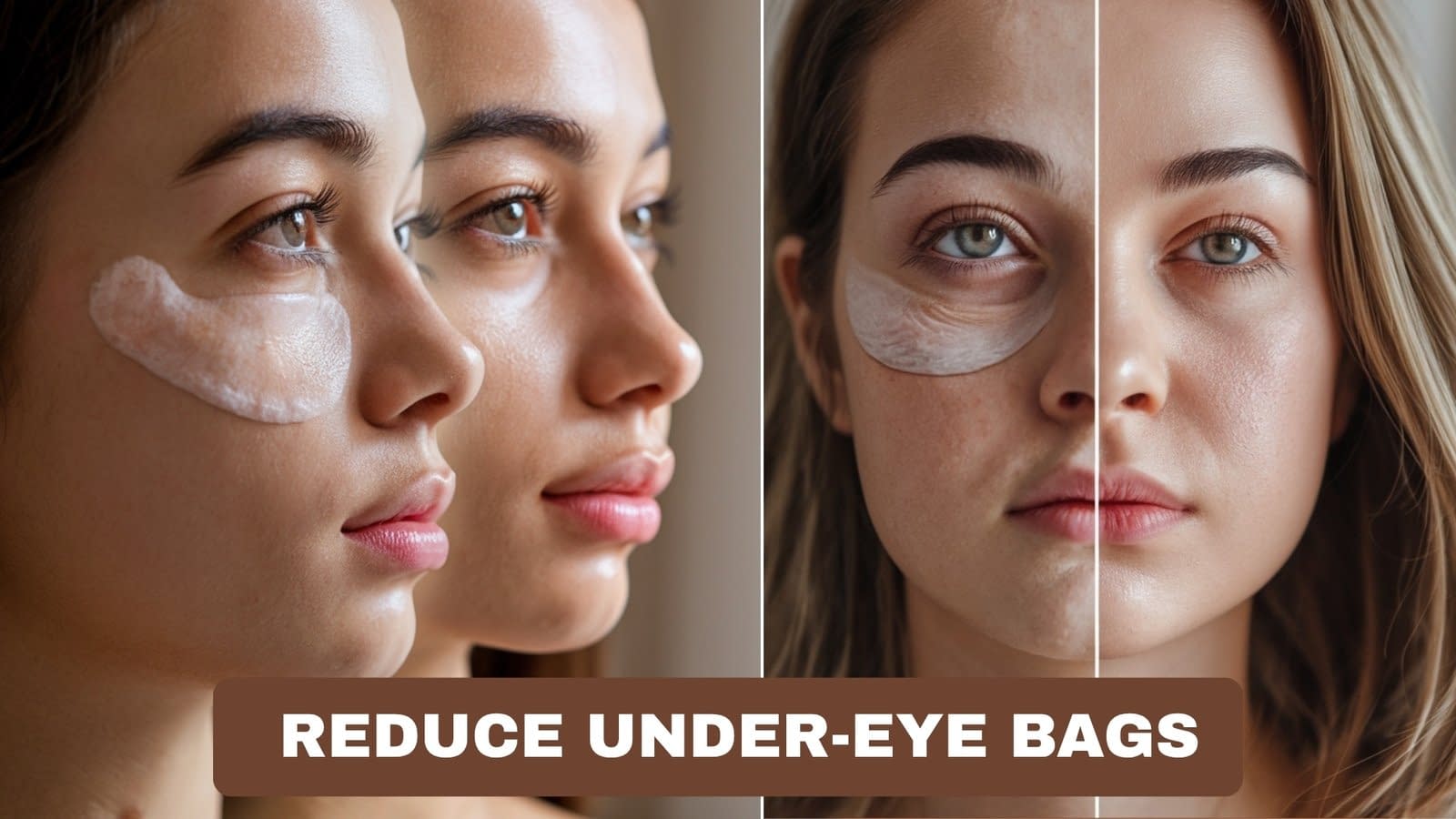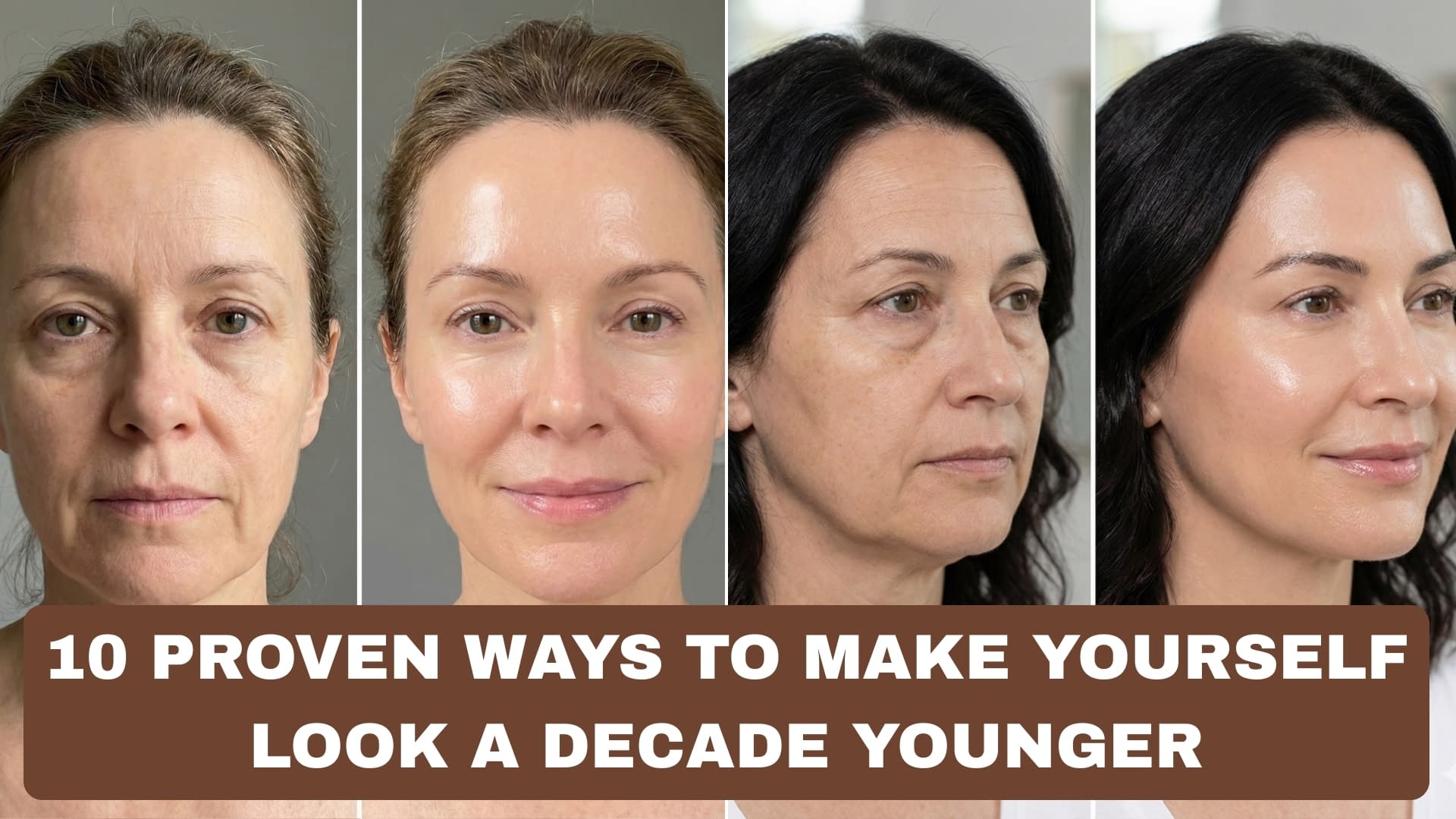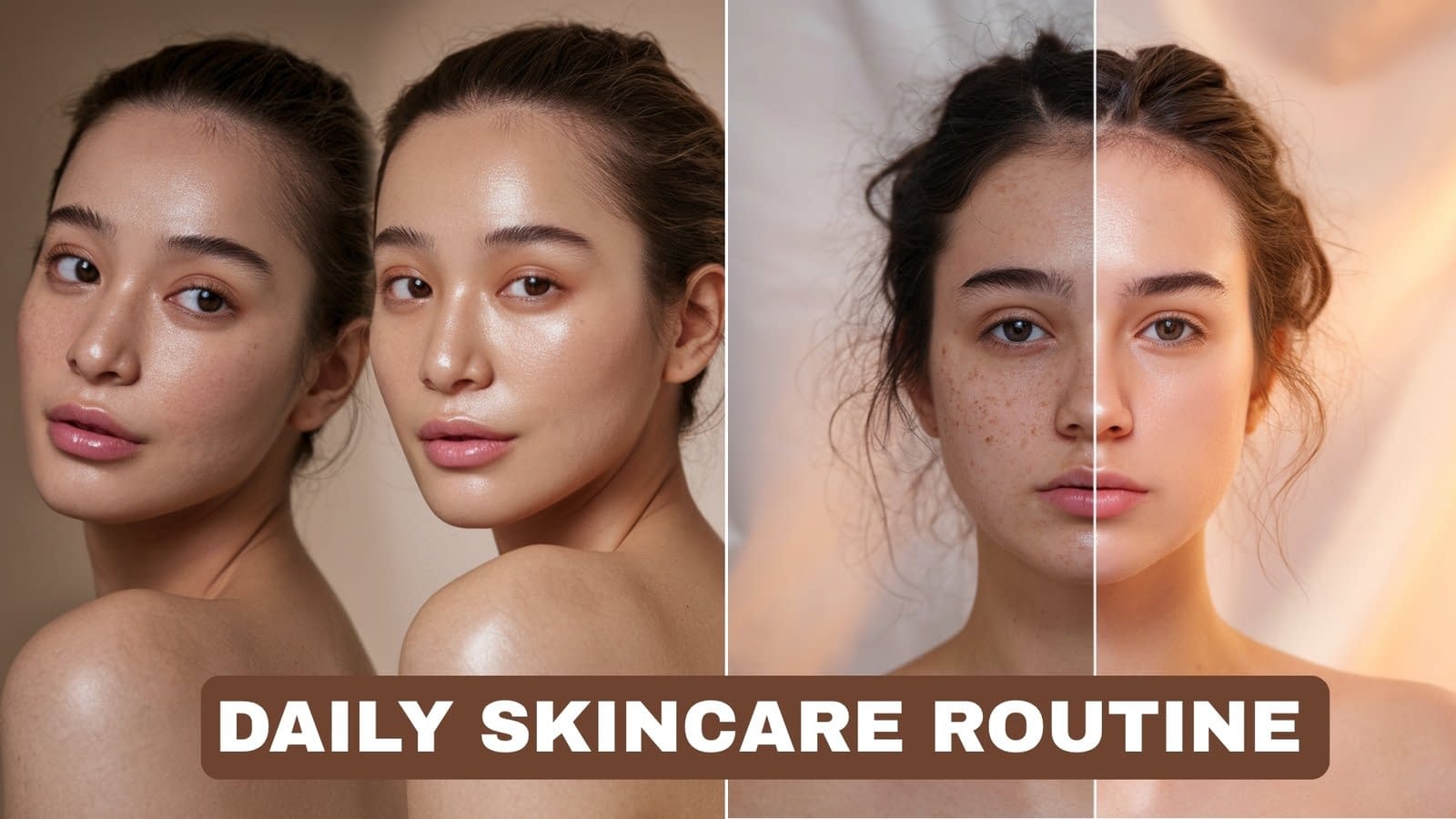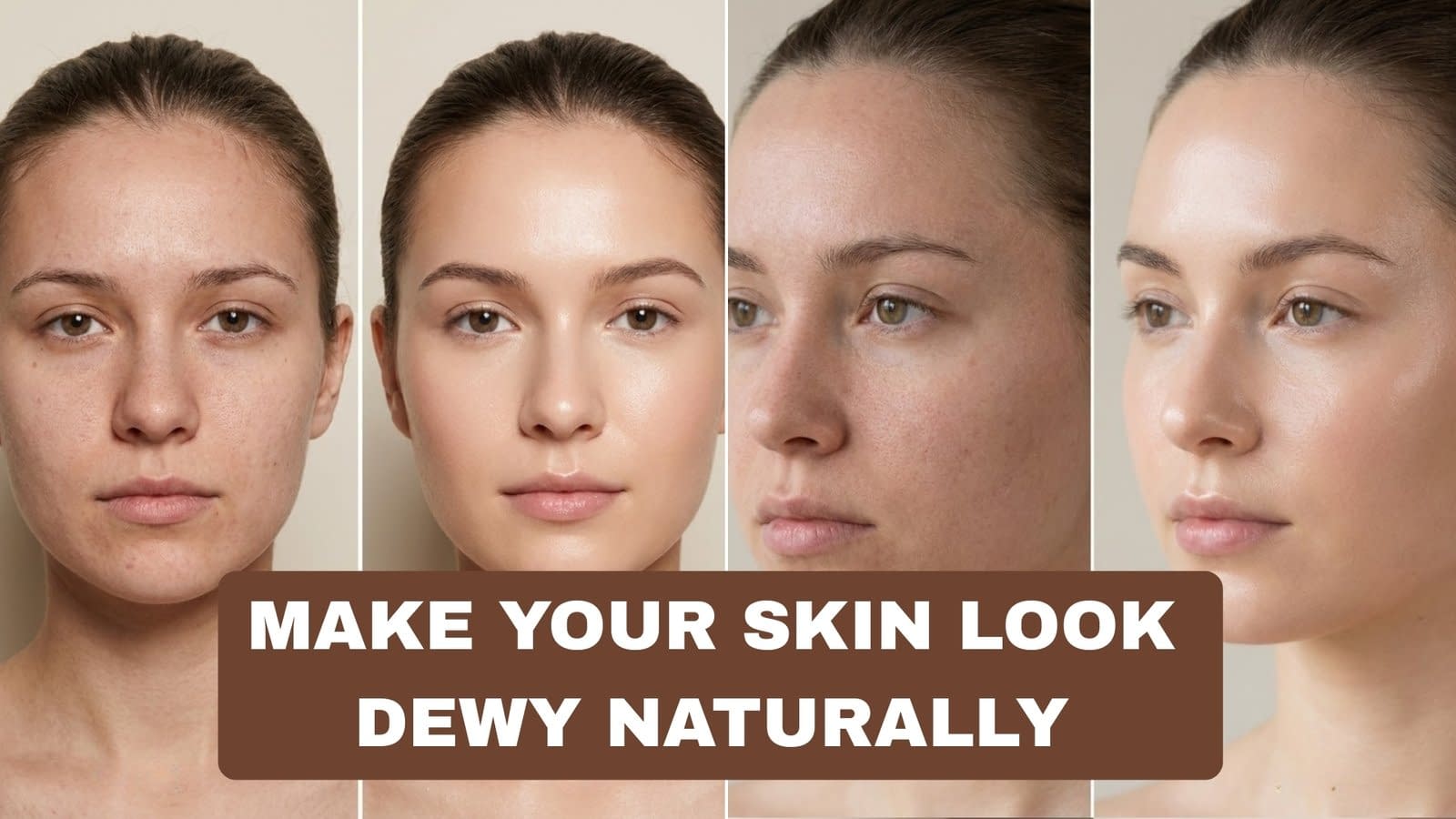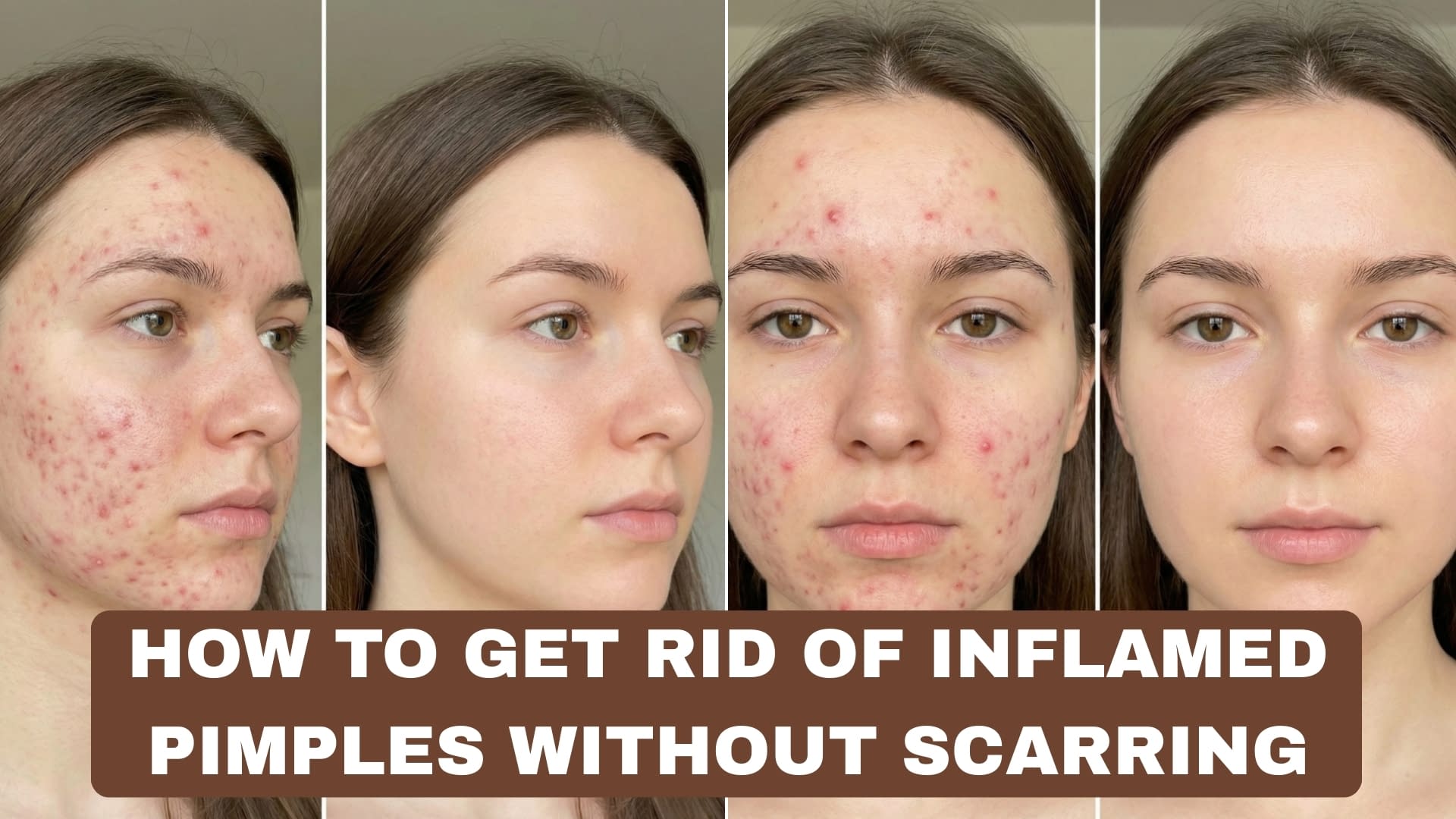You want the puffiness gone — preferably before your 9 a.m. meeting, not sometime next decade. Good news: some fixes work fast (temporary relief), others need steady habit changes to actually make a difference long-term. Below is a practical, no-nonsense guide with step-by-step instructions for immediate fixes and daily routines that reduce under-eye bags over time. No miracle cures, just things that actually help.
Understanding Under-Eye Bags: Causes and Common Myths
Short version: under-eye bags are usually caused by fluid, fat redistribution, thinning skin, or allergies — not your imagination. Knowing which is behind your own bags helps you choose the right treatment.
Main causes (what’s actually going on)
- Fluid retention (edema): Gravity, salt, alcohol, or lying flat let fluid collect under the eyes and create puffiness that looks like bags. Often worse in the morning.
- Fat pad shift: As we age, the fat that cushions the eyeball can bulge forward and create a permanent “bag” appearance. This is structural and less responsive to topical tricks.
- Loss of skin elasticity / thinning skin: With age the skin and collagen thin, making any puffiness or dark shadows more visible.
- Allergies and sinus congestion: Allergic inflammation causes swelling and watery eyes, which enlarge the under-eye area.
- Genetics: Thanks, ancestors — family traits can mean you’re predisposed.
- Lifestyle triggers: Poor sleep, excessive salt, alcohol, smoking, and chronic rubbing of the eyes worsen puffiness.
- Medical causes (less common): Thyroid disorders, kidney problems, or infections can cause eye swelling. See a doctor if it’s sudden, painful, or asymmetric.
Common myths (and why they’re wrong)
- “Cold water permanently shrinks pores/puffiness.” Cold reduces swelling temporarily but doesn’t fix the underlying issue.
- “Eye creams alone will solve structural bags.” Nope — topical products can improve skin texture and temporarily tighten, but they don’t move fat.
- “Cucumbers are a miracle.” They help by cooling and lightly hydrating, not by magically dissolving puffiness.
What to expect: some remedies give immediate, short-term results; others reduce baseline puffiness over weeks. For structural bags, cosmetic procedures may be required for a lasting change.
Proper Sleep and Lifestyle Habits to Minimize Puffiness
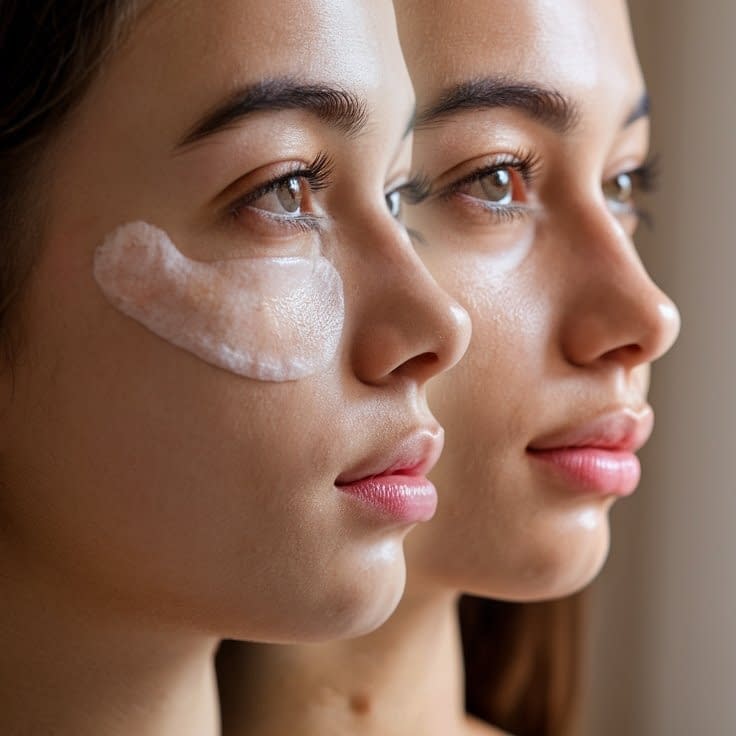
Sleep and lifestyle are the low-hanging fruit. Fix these and the bags often shrink noticeably.
Step-by-step sleep & lifestyle checklist
- Get consistent sleep: Aim for 7–9 hours nightly and keep a regular bedtime/wake time. Irregular sleep spikes cortisol and fluid retention.
- Elevate your head while sleeping: Use an extra pillow or a wedge so your head is slightly elevated (about 30°). This prevents fluid pooling in the face overnight.
- Reduce evening salt and alcohol: Both cause water retention that shows up under the eyes in the morning. Keep dinner lower in sodium; limit alcohol to avoid puffiness and poor sleep.
- Quit or cut back on smoking: Smoking accelerates collagen loss and worsens under-eye hollows and bags.
- Avoid sleeping face down: Pressure and rubbing from face-down sleep increases fluid and creases — sleep on your back if possible.
- Cold rinse in the morning: Splash lukewarm then cool water to wake circulation; follow with cold compress for a quick de-puff. (More below.)
Timeline: Expect visible improvement in morning puffiness within days of elevating your head and adjusting salt/alcohol; consistent sleep will improve overall appearance over weeks.
Hydration and Diet Tips for Healthy Eyes
Hydration and what you eat directly affect fluid balance and skin quality.
Step-by-step diet & hydration rules
- Stay hydrated: Drink water throughout the day. Dehydration can paradoxically cause your body to retain fluid. Aim for consistent intake — not forced gulps.
- Reduce high-sodium foods: Cut down processed foods, instant noodles, and salty snacks — these create puffiness overnight.
- Balance your electrolytes: If you sweat a lot, replace lost minerals sensibly (salt + potassium from bananas/avocados) so your body doesn’t hold extra water.
- Eat anti-inflammatory foods: Omega-3s (fatty fish), fresh vegetables, and berries reduce inflammation that can worsen puffiness.
- Limit alcohol and caffeine at night: Alcohol dehydrates and causes rebound swelling; caffeine late at night disrupts sleep. Small amounts of caffeine earlier in the day are fine.
- Consider food sensitivities/allergies: If puffiness coincides with certain foods, test elimination for a week and observe changes.
Practical tip: Keep a daily food and sleep log for 7–14 days — often the pattern (salt/alcohol/late meals) jumps out.
Gentle Eye Massages to Reduce Fluid Retention
Lymphatic drainage massage helps move fluid away from the under-eye area. Do it gently — the skin here is thin.
Step-by-step lymphatic eye massage (do daily, 1–3 minutes)
- Clean hands and face: Start with a clean face and, if desired, a drop of lightweight oil or eye cream to reduce friction.
- Start at inner corners: Use your ring fingers (they apply the least pressure). Place them at the inner corner of each eyebrow and apply gentle pressure, then glide outward along the brow bone to the temple 4–6 times to move lymph.
- Under-eye sweep: With very light pressure, place fingertips under the inner corner of the eye and sweep outward along the under-eye area toward the temple. Repeat 4–6 times. Don’t press into the eye.
- Temple drainage: Finish by pressing and holding gently at the temples for 3–5 seconds to encourage fluid exit. Repeat the full sequence 2–3 times.
- Optional gentle tapping: Lightly tap (patting) with ring fingers across the cheekbones and under the eye for 30 seconds to stimulate circulation.
Frequency & safety: Do once daily in the morning or evening; stop if you feel discomfort or notice increased redness. Don’t massage over active infections, styes, or broken skin.
Natural Home Remedies and Cold Compresses
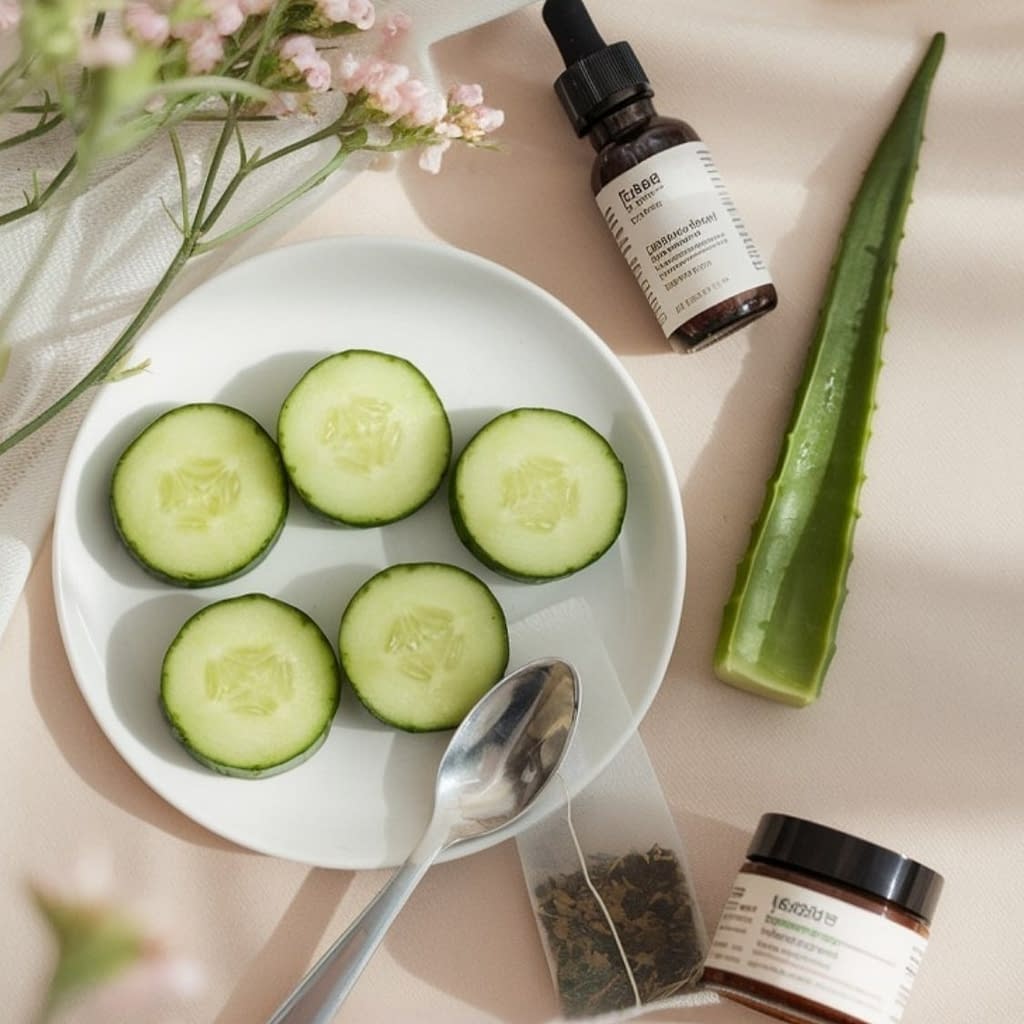
These are quick, cheap, and give immediate temporary de-puffing. They don’t replace long-term changes but work well before events.
Effective home compresses (with step-by-step)
- Cold spoons (fast & cheap):
- Chill two metal spoons in the fridge for 10–15 minutes.
- Gently press the curved side of each spoon against under-eye bags for 2–3 minutes, sweeping outward. Repeat once.
- Effect: cold constricts blood vessels and reduces swelling temporarily (10–60 minutes).
- Green tea bags (decongesting + antioxidant):
- Steep two green tea bags, then chill in the fridge for 15–20 minutes.
- Lie down and place cooled bags over closed eyes for 10–15 minutes.
- Effect: reduces inflammation; caffeine helps constrict vessels.
- Cucumber slices (hydrating & cooling):
- Chill slices first. Lay on eyes for 10–15 minutes. Works mainly by cooling and hydrating.
- Ice pack wrapped in cloth: 1–2 minutes to shrink swelling in a pinch. Don’t apply ice directly to skin.
- Aloe vera gel: Cool gel applied gently can soothe and reduce mild inflammation over repeated use.
- Potato slices or juice: Raw potato has mild anti-inflammatory enzymes; place chilled thin slices for 10–15 minutes if you want to try. Patch test first.
How long results last: Temporary — usually a few hours. Great if you need instant improvement.
Skincare Products That Help Target Under-Eye Bags
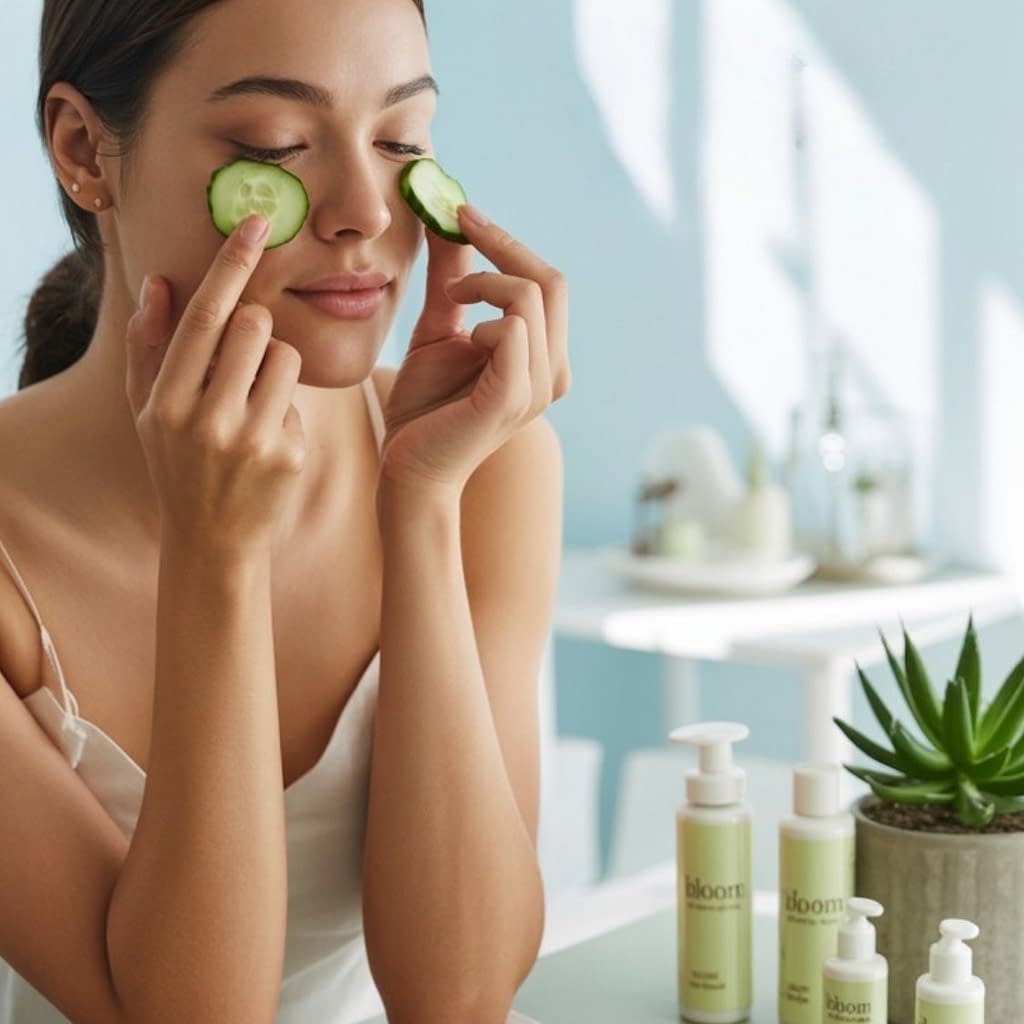
Topicals can temporarily tighten, brighten, and improve skin texture. Use them smartly; they’re helpers, not miracle workers.
Key ingredients and how to use them
- Caffeine: Temporary vasoconstrictor that reduces puffiness and tightens skin. Look for eye gels/serums with caffeine and apply in the morning.
- Hyaluronic acid: Hydrates and slightly plumps fine lines and hollows, reducing shadowing. Use lightweight HA serums or eye creams.
- Niacinamide: Reduces inflammation, strengthens barrier, and can improve texture and oil regulation over weeks. 2–5% is common.
- Peptides: Support collagen and skin firmness over months of consistent use. Apply nightly if tolerated.
- Retinoids (retinol/retinoid alternatives): Stimulate collagen and thicken thin skin over time, reducing the visibility of hollows and bags. Start slowly (1–2 nights/week) and always use sunscreen during the day — retinoids increase sun sensitivity. Avoid if you’re pregnant or breastfeeding unless your doctor says otherwise.
- Vitamin C (topical): Brightens skin, reduces pigmentation in shadows, and supports collagen. Use in mornings with sunscreen.
- Alpha/beta hydroxy acids (AHAs/BHAs): Exfoliate and improve skin texture; can help concealer sit better. Use carefully around eyes and patch test.
- Cool applicators/rollers: Metal or ceramic applicators help deliver product while cooling and de-puffing.
Application routine (simple)
- AM: Cleanse → lightweight eye serum with caffeine or hyaluronic acid → moisturizer → sunscreen.
- PM: Cleanse → retinoid/peptide eye product 2–3x/week to start (if using retinoid) → moisturizer.
- Always patch test a new product behind the ear or inner arm for 48 hours before full face application. Eye skin is sensitive.
Realistic timeline: Visible tightening and smoothing from niacinamide/peptides in 4–12 weeks. Retinoid improvements on skin thickness and collagen may take 3–6 months.
Makeup Tricks to Conceal Under-Eye Puffiness
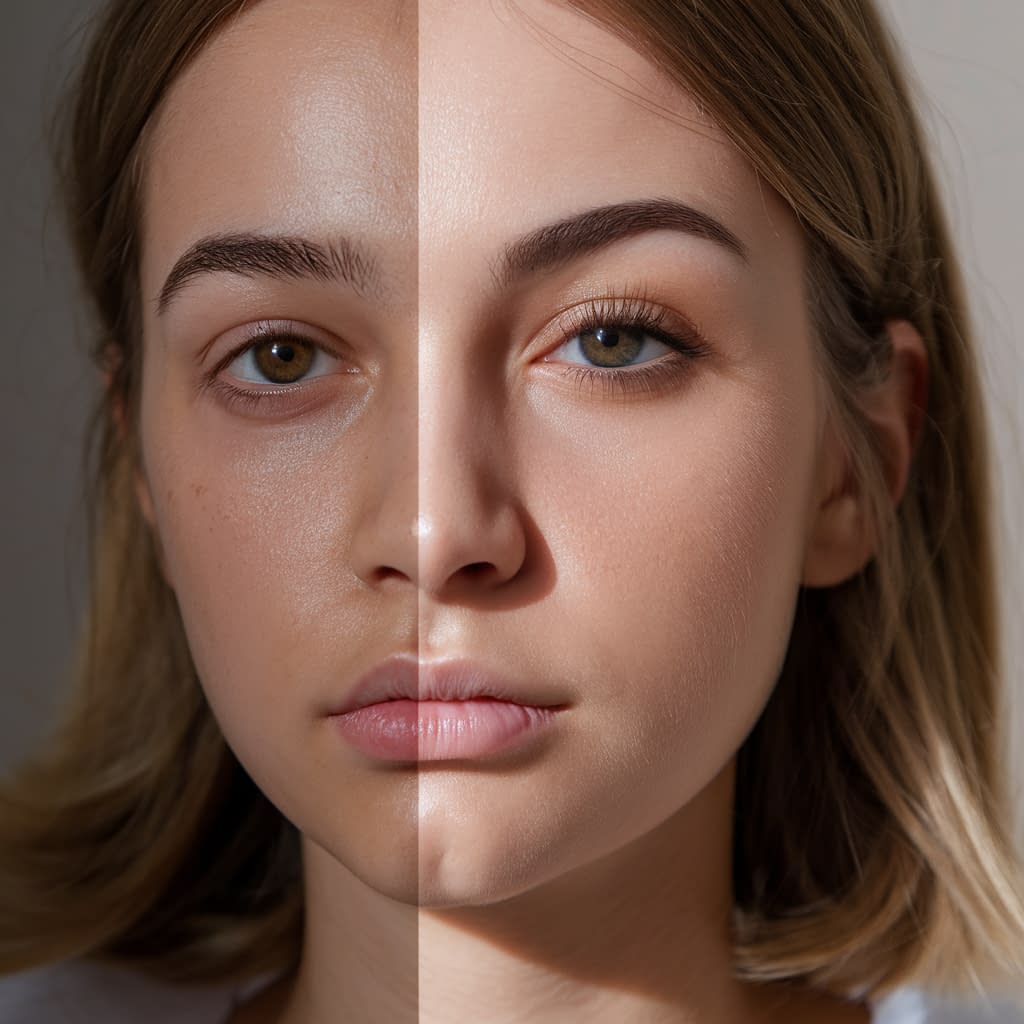
Makeup hides shadows and evens tone. It won’t remove bags but can make you look awake and less puffy on sight.
Step-by-step makeup hacks
- Prep the area: Apply a hydrating eye primer or thin layer of hyaluronic serum to smooth texture. Pat in, don’t rub.
- Color corrector (only if dark and puffy): For bluish/purple under-eyes, use a peach/orange corrector (shade depends on your skin tone) applied sparingly. Blend with a damp sponge.
- Concealer placement: Choose a creamy concealer that matches your skin (or one slightly lighter for brightness). Use the “triangle” method under the eye — draw an inverted triangle from outer eye to mid-cheek and blend upward. This lifts visually.
- Avoid heavy powder under the eyes: It settles into fine lines and emphasizes texture. Instead, set lightly with a micro-finishing powder only if you need longevity.
- Highlight strategically: A tiny dab of light on the inner corner and just above the highest point of the cheekbone reflects light away from the bag. Don’t highlight the puff itself — that makes it stand out.
- Contour subtly: Use a matte shade slightly deeper than your skin tone under the hollow of the cheek to create the appearance of a lifted cheek and less bag. Blend very well.
- Brighten the eyes: Curl lashes and apply a coat of mascara; a brighter waterline (beige/skin-toned pencil) opens the eye. This draws attention away from under-eye puff.
Quick kit: hydrating primer, peach corrector, creamy concealer, micro-powder, small blending sponge, mascara.
When to Consult a Doctor for Persistent Eye Bags
Most eye bags are cosmetic or lifestyle-related. See a professional if any red flags appear.
Red flags & when to see a doctor (step-by-step)
- Sudden, painful, or one-sided swelling: Could be infection, angioedema, or other urgent conditions. Seek immediate medical attention.
- Vision changes, severe pain, or fever: Go to emergency care.
- Persistent, worsening bags despite home care: Consult your primary care physician or dermatologist to rule out thyroid disease, kidney issues, or allergies. They may order bloodwork or tests.
- Allergy-related swelling: If you suspect allergies, see an allergist for testing and a treatment plan (antihistamines, nasal steroids, allergy shots).
- Desire for structural correction: For fat pad bulging or severe under-eye hollows, consult a board-certified dermatologist or oculoplastic/cosmetic surgeon. Options include:
- Dermal fillers (for hollows, may improve shadowing temporarily).
- Lower blepharoplasty (surgical removal or repositioning of fat pads for a longer-term structural fix).
- Skin tightening procedures (laser, radiofrequency) that may help skin laxity.
How to prepare for a consult: take photos (front and sides) showing changes over time, list products and medications you use, note sleep/diet habits, and bring up any family history of similar issues.
Daily Routine Tips to Prevent Under-Eye Bags in the Long Run
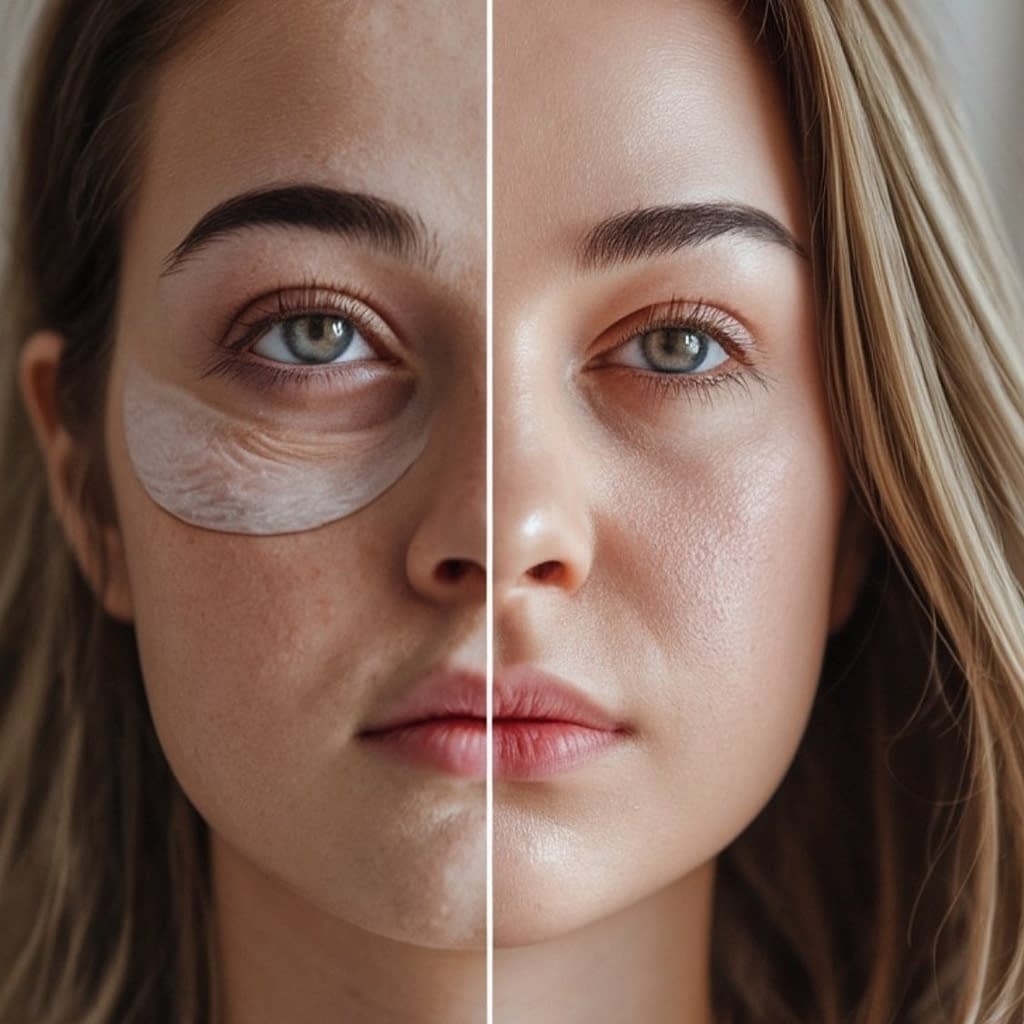
Prevention beats panic. Here’s a realistic daily routine that reduces baseline puffiness and improves skin health over months.
Simple daily routine (AM & PM)
Morning
- Cleanse gently.
- Cold compress or cooled spoon for 30–60 seconds if you wake puffy.
- Apply caffeine or hyaluronic eye serum.
- Moisturize and apply sunscreen (broad-spectrum SPF 30+).
- Apply makeup tricks if needed.
Evening
- Remove makeup and cleanse thoroughly.
- Apply peptide/retinol eye product 2–3x a week to start (or nightly if tolerated and not using strong retinoids elsewhere).
- Finish with a nourishing night cream (non-irritating).
- Elevate head and avoid salty late dinners and alcohol.
Weekly add-ons
- Lymphatic massage 3–5x per week.
- Clay or cooling masks once weekly for de-puffing.
- Assess allergies seasonally and treat proactively.
Lifestyle list (keeps your eyes less dramatic)
- Sleep enough and consistently.
- Hydrate, reduce salt/alcohol.
- Avoid eye rubbing.
- Wear sunglasses and sunscreen to protect delicate under-eye skin.
- Manage allergies proactively.
- Stop smoking.
Realistic timeline: Some daily tweaks give morning improvements within days; product-based and lifestyle changes show meaningful results in 4–12 weeks; structural issues may require professional procedures for permanent change.
Final Words
If you want instant relief before a meeting, use cold compresses, caffeine serums, and clever makeup. If you want fewer bags most mornings, fix the basics: sleep, head elevation, salt/alcohol reduction, and allergy control. Topical actives (niacinamide, peptides, retinoids) and gentle lymphatic massage will add real, lasting improvement over weeks to months. If your bags are structural or suddenly worse, stop guessing and see a doctor — some problems need medical treatment.
Do the simple, consistent things well. That’s the thing everyone underestimates. Follow the routine above for a month and you’ll know whether home remedies are enough — or whether it’s time to consult a pro.


